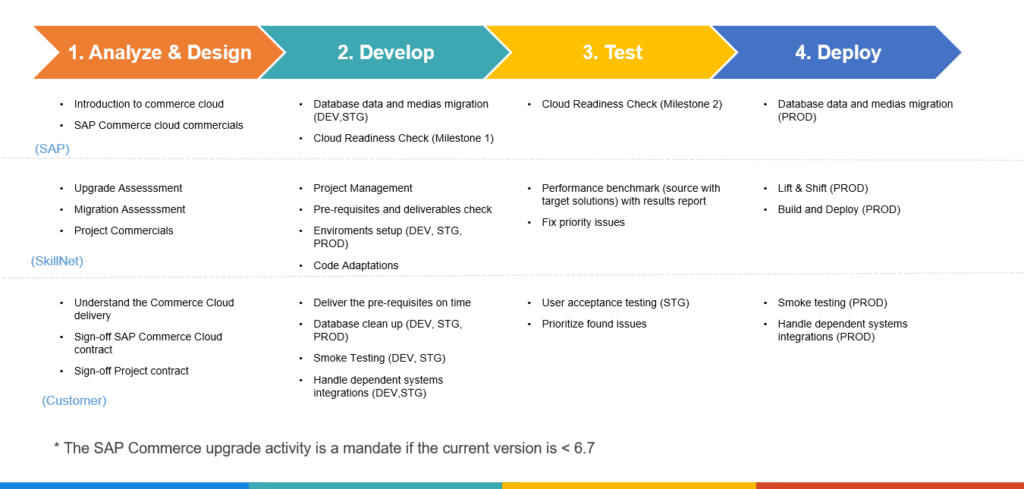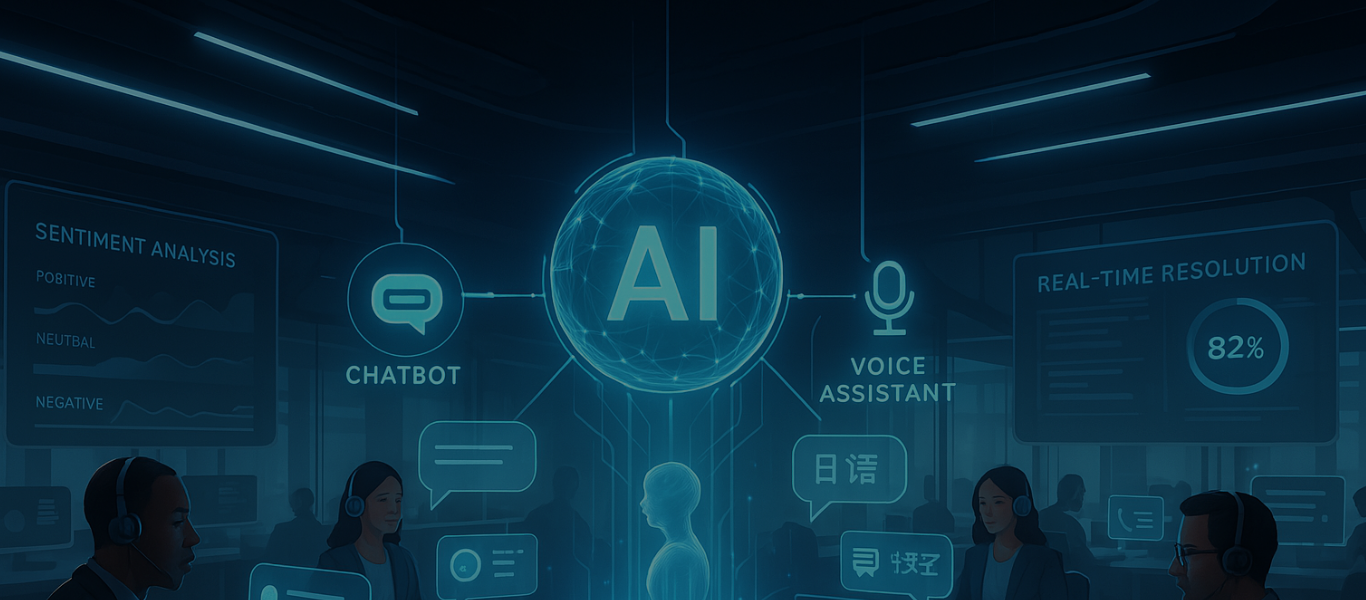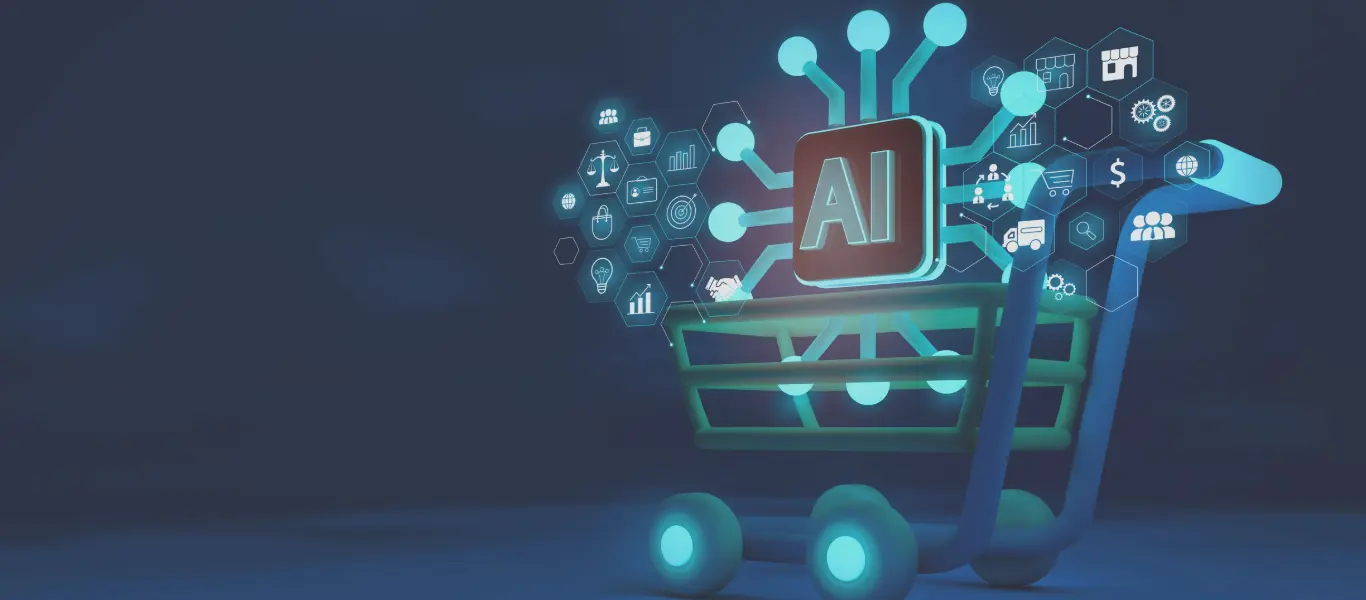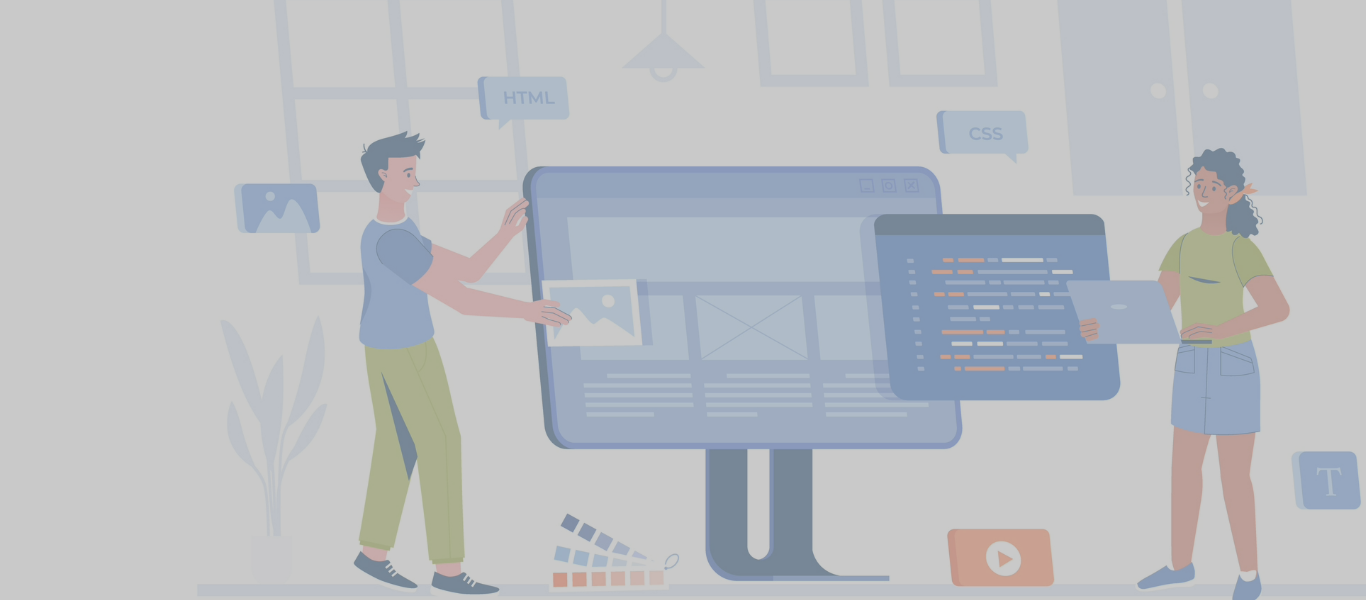This blog is Part 4 of the 4 part series based on excerpts of the webinar – Secrets to Successful SAP Commerce Cloud Migration. It covers:
- Key benefits of SAP Commerce Cloud (Part 1)
- Challenges while migrating SAP on premise to SAP commerce Cloud (Part 2)
- SkillNet approach to migration SAP commerce Cloud (Part 3)
- Q&A SAP commerce Cloud (Part 4)
In this blog we discuss SkillNet’s approach for successful SAP commerce cloud migration.
Speakers

DoLoop Digital

SkillNet Solutions Inc

SAP Commerce Experience
SkillNet Approach Of On-Premise To SAP Commerce Cloud Migration
Pragnesh Ray – SkillNet
So we touched very briefly on, what is SAP commerce cloud, how does the environment look like, and what are the challenges while migrating that you should keep in mind. And now the crux of it what is the SkillNet’s approach to migration?
The migration is almost I would say it’s a waterfall process. This is not agile. You have to analyze, upfront, than you do development, which is mainly code adaptation testing in your QA staging environment, and then deploying.

Then again testing, in your lab environment there are multiple parties involved in this process. One of the key role that is played by SAP during this process is for your data and media migration. And then the other key players you have are your partner, in this case SkillNet, and you yourself.
We have outlined what is the role that each party plays during the whole migration process. We start with at a high level the initial phase of analyze and design, at this stage SkillNet would do an upgrade assessment.
If you are on the minimum supported version, then you, don’t need an upgrade. We can take your version as it is, and do a migration to cloud. In case you are not, we’ll do a migration assessment that would have project commercials.
During the development phase, there is basic project management setting up the environment code at a station that is more like we analyze your existing system. There are a lot of details to it. That’s where we change your code so that, it will work correctly in the cloud environment, testing, identifying bugs, you fix priority issues deployment, lift and shift to production and build and deploy in production.
Customer also have a role during this process where they have to deliver on certain prerequisite there to help in database cleanup, testing, prioritizing the issue, smoke testing and so on. SAP does play an important role in this whole process and they have a gating, they call it cloud readiness, check milestone one, and two. I would let Pat describe those in detail.
Pat Samson – SAP
The SAP led activities, you mentioned the database migration. Within the database migration, we obviously want to move the data from your existing data store into, the cloud database. So as you mentioned that the database cleanup is kind of a key component.
We can go through and identify what needs to be moved, how we’re going to move it, actually go through and manage the move process. The reason SAP needs to do this is for security purposes, with the Azure infrastructure for the compliance and certification.
Essentially customers and partners are not allowed to directly access the database or go through and access the operating system level. So we can go through and manage that process. obviously there’s some breaks there for you to do things like database cleanups and things along those lines.
We’ll essentially go through and help get the database and media moved, go through as many different environments as they need to be targeted for that. So some customers simply just do a single move to basically to prod and then kind of run some scripts to cleanse and anonymized data and move it back down the lower environments. Other customers will go through and move like for like from each of their environments into existing environments, into each of the new environments.
So, those can all take in, affect the timelines there, and as well, the project, we will obviously take part in the project plan, as we move forward in terms of making sure we’re inserted at the correct points from the cloud readiness checks. Obviously the cloud readiness checks are there to one initially evaluate your, move project to make sure complies with SAP’s recommended best practices. But then essentially the milestone of one milestone two that was just mentioned are essentially there to make sure, the code is being deployed in a responsible performing fashion. And to make sure it’s essentially ready to go to production. So, because we are providing as much infrastructure as required to meet your metrics. So commerce cloud is licensed based on gross merchandise value annually, or annual order volume.
We are responsible for providing the appropriate infrastructure to support our SLAS, like page load times and things like that. These cloud readiness checks are also intended to make sure integrations and performance. There’s no code that’s, running the same SQL query 20 times in a row that would lead to performance impacts on the site. just to be responsible around making sure we have the infrastructure properly sized for your goals., to meet the SLAS. that’s the goal of the cloud readiness checks. It is ultimately to make sure everything works fine at the time of go live, that there aren’t going to be any surprises.
Pragnesh Ray – SkillNet
We talked through, the cloud readiness check one, and two.
You cannot start your development until you have gone through the CRC, check one with SAP and you cannot launch your project until you have cleared your CRC check two.
These are essentially to ensure the success of the project.
Analyze And Design Phase
This is the crux of what SkillNet would do, in terms of, activities and recommendation during the analyze and design phase. I’ll highlight one or two, major activity over here let’s say, the review of cart, order management, payment system, provider integration.
Typically if you have your application running currently most of the customizations are done during the checkout process, payment integration, order management and so on. What we do is we review your implementation see for what kind of customization that you’ve done, any new types and so on, and whether this is going to be compatible with migration on the cloud. We also look for performance issues or those kinds of things.
It’s a very thorough review of your existing implementation. Same thing we do with data model analysis. We look at extensions that you have done on your site and whether they are compatible. We do use tools to do source code analysis.
Manual source code analysis is also done. We also do a defined performance test approach. We check if automated testing plan is in place. So there are a lot of activities that we would do. I want you to be cognizant that what this, indicates over here is, we are trying to mitigate the risks that we had identified.
What we had, identified as the risk was lack of planning in very minute detail on what to look for, where to look for and what are the details of it. So this helps in mitigating that risk, this also addresses the risk of expertise. So we thoroughly and in detail painstakingly analyze and go through a checklist of processes.
Development And Testing Phase
During this phase, as you can see same process, very detailed, the main activity during this process is, cloud configuration and code changes. this is where if something is not compatible or if we have identified some redundancy or performance issues or so on, we would modify your code at that point.
That is, setting up of your CICD process, configuration on the cloud for logging security, configurations, filters for your endpoints and so on.
Data maintenance is a making sure that there is no redundancy in your data. a retention policy and so on, we look at it when we have to migrate, we want to make sure we take only what is relevant basic client profiling.
What we would do at this point is, profile the webpage. how long does it take to load, all your JavaScripts and so on. Same thing, we’ll do profiling for your application profiling on your server side, a lot of activities over here too. And once we have gone through those activities, then we are prepared for CRC check two.
We ensure essentially that whatever SAP is going to check for we prepare and prepare the code and the system so that those review processes go, seamlessly.
Deploy Phase
This, as you’re familiar with, is deployment, it involves a lot of cut-over planning, so this is what is pre cut-over activity, postcode cut-over activity, sequencing of events. It’s a very detailed, systematic, planning in terms of how are we gonna do the release cold promotion set up testing, performance testing, , hypercare support.
We also provide, intensive support, initially because once the site is live there it could be issues. So work with the customer service rep and identify what issues are coming up and how to address them, making sure the monitoring is turned on and the alerts are coming through.
So in short, what I want to highlight over here is the SkillNet approach to migration is very detailed, very thorough probably in the interest of time we cannot discuss each and every activity, but through the slides I think you get the picture that how detailed and systematic the whole approach is going to be.
It’s not that it’s just the process we come with, a lot of tools, a lot of templates for execution.
Pat Samson – SAP
Just to emphasize, we are still supporting the legacy accelerator storefronts., So we’ll continue to support those, that these Spartacus is really only considered a feature parity with the B2C storefront right now. We hope to have it and feature parity with the B2B storefront by the end of this year or early next year. For those of you are interested in moving to our headless storefront, obviously you could, leverage other headless technologies as well.
Part 4 of the Blog covers – Audience Q&A.






 Ingeniería
Ingeniería







